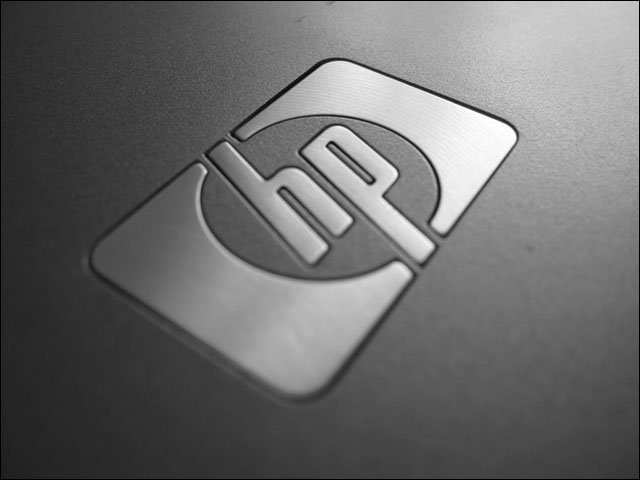
news Global technology giant HP this week revealed that Medibank division Medibank Health Solutions had deployed a complete stack of HP IT infrastructure ranging from blade servers to storage and interconnecting systems, in a rollout which appears to constitute the base parts of a scalable private cloud platform.
MHS is an organisation owned by health insurer Medibank Private. The organisation provides telephone- and web-based healthcare services as well as “walk-in wellness clinics” for organisations around Australia – with customers including government and business organisations. In HP’s statement this week, the vendor said MHS had recently experienced rapid growth – including a five-fold increase in staff – that had meant it had outgrown its existing IT infrastructure.
The result was that MHS worked with local HP partner Triforce Australia to deploy HP’s VirtualSystem platform to meet its needs. VirtualSystem is a number of interconnected systems which aims to provide organisations with IT infrastructure that will suit the kind of virtualised server environment which most large Australian organisations are gradually progressing to at the moment.
“By pre-integrating HP 3PAR Storage, HP BladeSystem servers and HP Virtual Connect technology, the solution enables MHS to allocate resources easily across physical and virtual environments to ensure predictable delivery and service levels,” HP said. “As a result, MHS can rapidly provision storage based on changing network workloads while quickly delivering new services customers need.”
MHS head of infrastructure Charles Gonzales said in HP’s statement that his company had been experiencing capacity and performance issues with its previous infrastructure. “The flexibility, scalability and ease of management provided by our HP Converged Infrastructure allow us to keep pace with our business growth,” he said.
MHS deployed a pair of HP 3PAR T400 storage systems, alongside HP’s 3PAR Management Console, ProLiant BL460 G7 server blades (to run VMware and Citrix servers) as well as ProLiant BL685 G7 server blades to support Microsoft’s SQL database software. The company installed its hardware in five BladeSystem c7000 enclosures, connected by HP Virtual Connect FlexFabric 10Gb/24-port modules.
HP said that the benefits of the platform were that it enabled MHS to:
- Reduce storage capacity requirements by 80 percent with HP 3PAR Thin Conversion migration from MHS’ legacy storage solution, achieving a greater return on investment by reducing management and overhead costs.
- Improve productivity with 99.999 percent uptime, providing 2,500 employees, the remote workforce and customers reliable access to healthcare services and programs.
- Ensure rapid disaster recovery by installing one of the HP 3PAR T400 Storage systems at a separate location, and including HP 3PAR Remote Copy Software on both systems to share data from any application simply, efficiently and affordably.
- Perform quick, proactive maintenance of IT systems to ensure consistent network uptime and 24/7 service supporting more than 3 million healthcare interactions a year
“Organisations providing pivotal healthcare services need a technology infrastructure that can simultaneously support diverse system users and various types of workloads,” said Steve Kelly, general manager, Storage, HP South Pacific. “The HP Converged Infrastructure enables Medibank Health Solutions to provide scalable solutions that support growth while ensuring continuous operation of its daily business.”
opinion/analysis
Wow. Things have certainly changed drastically from when I was a systems administrator a decade ago. It seems very much as though major organisations really do not like to purchase stand-alone systems – stand-alone servers, stand-alone network switches, stand-alone storage and so on. It seems like it is very much in vogue for large organisations such as MHS to have much more wide-ranging conversations with a smaller number of vendors these days.
HP, it seems, would like to lock customers in to buying whole IT infrastructure platforms from it rather than component parts – and it seems as though those component parts are geared to work much better when integrated together than when separate. There’s only a limited number of vendors with the scale to provide these kinds of integrated solutions – I’m thinking of HP, IBM, Oracle (with its Sun Microsystems purchase), the Cisco/EMC/VMware coalition, and perhaps Fujitsu and Dell as well to a certain extent.
I do wonder to what degree these platforms lock organisations in. For example, if you take MHS’ case, will the organisation be able to easily grow the HP platform it has just purchases, as it needs to in half a decade? What if there’s another supplier which can provide a better option in future for one constituent part? It seems like quite a bit of this HP infrastructure is interdependent; I wonder to what extent vendor lock-in will be an issue in future here.
In any case, we’re seeing more and more of these scalable, ‘private cloud’-type solutions in Australia, with big chunks of IT infrastructure being rolled out wholesale. It will be fascinating to see where this trend takes us.
One last thing — I note that HP didn’t label this deployment as ‘private cloud’ in its media release announcing it. But it clearly is trending in that direction — it’s extensive server and storage infrastructure which can be self-managed to a certain extent by those who use it, and it’s designed from the ground up to be used with advanced virtualisation and datacentre solutions. If you put it in an external provider’s datacentre, it starts to look a lot like private cloud, or something like it, under the radar.
Image credit: wlodi, Creative Commons and HP

I would not get too excited. The board in medibank has driven many IT projects without the consent and the leadership of the CIO.
This could be another pipe dream the board have thought of, just like when they tried to eliminate their ibm mainframe, which started in 2005, was burning 1 million bucks a day, and last time I stepped in one of their shops, they still had a terminal emulator and were punching in data into the mainframe…
Comments are closed.